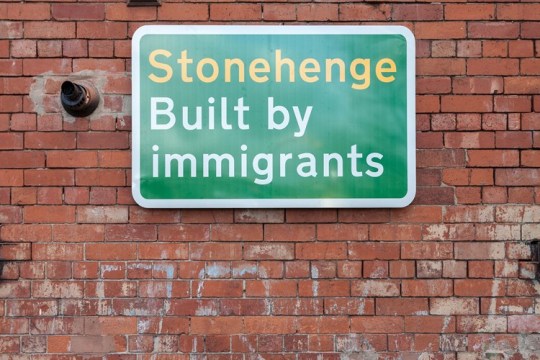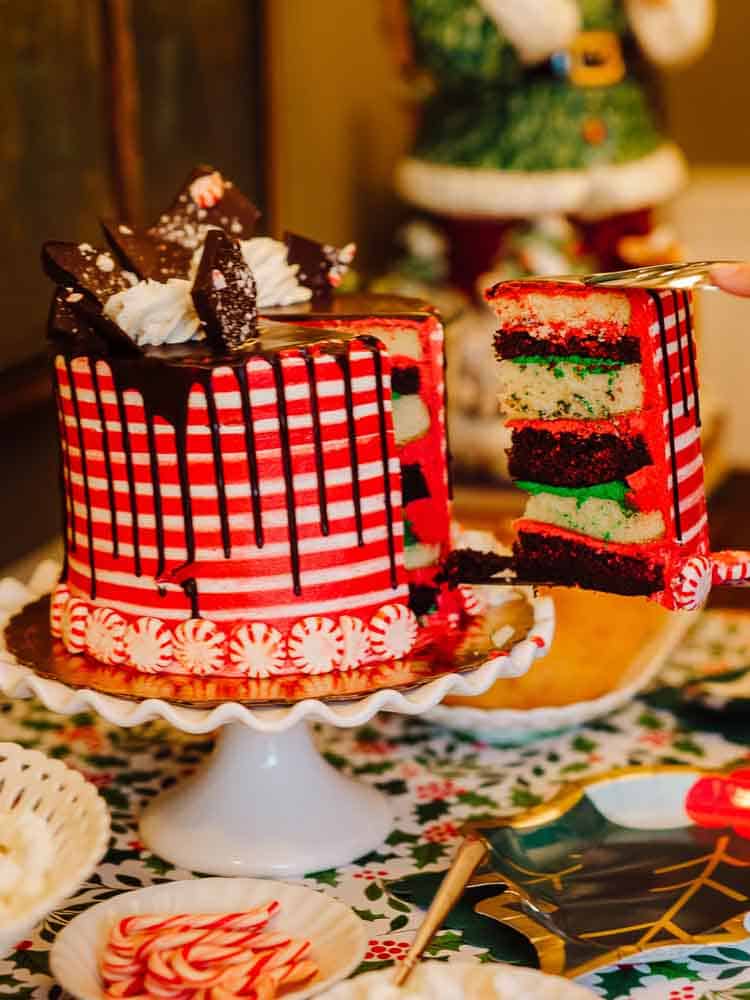By Kenny Brophy (the Urban Prehistorian)If a poll of Conservative members showed a majority of them were druids, Boris would be straight down to Stonehenge to dance naked for the seasons (Mark Steel, Independent, 28 March 2019)Stanton Drew’s stone...

By Kenny Brophy (the Urban Prehistorian)
If a poll of Conservative members showed a
majority of them were druids, Boris would be straight down to Stonehenge to
dance naked for the seasons (Mark Steel, Independent, 28 March 2019)
Stanton Drew’s stone circles may not vibrate as wildly in the English consciousness as their easterly cousins at Stonehenge, however, they remain seriously impressive pieces of Neolithic kit. (Weird Walk, The Face 4.001)
Standing

Jacob Rees-Mogg, standing in the General Election, is standing in front of a standing stone. The parliamentary candidate (and current incumbent) for North East Somerset is asking everyone to vote Conservative in the December 2019 General Election in order to deliver Brexit. He is wearing a double-breasted great coat, almost invisible glasses, and a baby blue rosette the same size as the Nebra Sky Disk.
What was this WTF moment all about?
Was it just an innocent bit of eccentric electioneering fun that just happened to take place with a megalithic backdrop?
Or perhaps the film was an appeal to a certain kind of voter who craves the nostalgic fantasies of the English countryside, windswept standing stones, comical ‘scrumpy and western’ bands like The Wurzels, and Brexit?
Or was this short film altogether something more sinister?
I will ponder awhile on these questions during this post, but the reaction to the video was of even more interest to me.
#BrexitPrehistory
This troubling little video has garnered a good deal of attention. It initially dropped on 2nd December 2019 via Rees-Mogg’s own twitter account (with approximately 369,800 followers on the eve of the General Election ten days later). At the time of writing (13th December 2019) it has been viewed almost three quarter of a million times, and this is only on the Twitter platform.
The film is a particularly egregious example of what I have come to call #BrexitPrehistory (for it was not really about the election, it was about ‘getting Brexit done’) and it indicates the increasingly casual ways that prehistory is being used to make arguments for Brexit by leavers. However, the video also became a focal point for a lot of anti-Brexit (‘remainer’) sentiment, something I would also like to unpick here.
My contention is that we should not be using a prehistoric stone circle to make any kind of points about contemporary political and social challenges although it can be tempting to do so.
Stone circles like Stanton Drew, the one chosen by JRM as his backdrop, are neither leave or remain monuments. Yet, problematically, social media reaction to Rees-Mogg’s piece to camera suggests it might be both.
Petrified
First, let’s consider the video itself. It lasts all of 35 seconds, with a further final five seconds taken up with ‘Get Brexit Done’ and ‘Conservative Party’ branding.
JRM stands in front of one of the standing stones of Stanton Drew. The megalith is partially obscured by his torso and head, and he speaks while performing some half-hearted hand and body gestures. His stiff delivery style mimics the standing stones behind him, his petrified voters, a captive audience.

He narrates the following election message in his curious posh robot voice:
Adge Cutler sang the famous song: ‘When the Common Market comes to Stanton Drew.'
I’m here by the standing stones in Stanton Drew, thought to be 4,500 years old, some of the most important stones in this country.
And I want to get the Common Market out of Stanton Drew.
We must get Brexit done. Only the Conservatives can do that - a majority Conservative Government can get out of the European Union and make Brexit happen by 31st January.
Please vote Conservative and get the Common Market out of Stanton Drew.
This little vignette was based on the title of an Adge Cutler song, performed by his band The Wurzels, on the theme of joining the Common Market and the impact it might have on Stanton Drew, the village (not the adjacent prehistoric monument of the same name). Both just happen to be in Rees-Mogg’s North East Somerset constituency for which he was, at the time, standing for re-election, and has since been re-elected with a decreased share of the vote.
The song, 'When the Common Market comes to Stanton Drew’, is, depending on your perspective full of outdated, sexist, and racist, sentiments about foreigners and their stereotypical traits. Not to say geographically challenged as to the composition of Europe.
In
the evenin’ times I s'pose, we’ll sip of our vin rose,
Just like they do in the Argentine
And we’ll watch they foreign blokes, with their girt big 'ats and cloaks,
Flamingo-in down on the village green.
We’ll 'ave to watch our wenches when they dark-eyed lads gets here,
And the local boys’ll 'ave to form a queue,
They’ll say “Ooh la la, oui oui,” instead of “How’s bist
thee?”
Or as I have also seen it expressed, the song is a rather quaint musing on the exotic effects of becoming more closely integrated with Europe, and is in fact pro-European in sentiment, a parody of the prejudices of rural Little Englanders (oh the irony).
And the Druids Arms won’t close till
ver’ nigh two,
And we’ll all drink caviar from a girt big cider jar,
When the Common Market comes to Stanton Drew!
Wikipedia more neutrally notes that in ‘…response to opening up of trade with Europe, Adge suggests what might happen to Somerset culture when Europeans come over’.
This slice of ye olde Englande nostalgia fits well with the JRM brand, apparently au fait with what the working class oiks get up to in their pubs and barns, using deliberately anachronistic terminology, and always wearing at least one item of clothing that belongs to clown.
In reality this is all a bit attention seeking, self-promoting an eccentric film in an election campaign where, by all accounts he had been side-lined by the Conservative Party machine for being too ‘off-message’ even for the Tories. He is, as the Daily Mirror describes him, a ‘disgraced Tory toff’.
Rees-Mogg smacks of a man who likes his stone circles rural, just like WG Hoskins. After all, this was indeed a sylvan spot before all those pesky roads, factories, and voters appeared in the surrounding landscape.

‘Views of Stanton Drew AD 1784’ (source: Dymond 1877)
Note that Rees-Mogg stands in such a position that the camera can only see the rural behind him, and no telegraph polls, roads, or other modern clutter. Another angle would have revealed a different temporal dynamic. He wants you to imagine this photo could have been taken in 1819 or 1919 because his persona is all about a timelessness that stems from a fear of change, of his privilege being undermined by progress.
Memes and mocking
Responses to the film have been largely restricted to social media, with almost no mainstream news commentary. On Twitter there has been a mixed bag of bemused, amused, and angry reactions, as well as some fine memes; a lot of this commentary has come from archaeologists, unsurprisingly.

Recumbent Rees-Mogg (Jonathan Last, @johnnythin)

Voting Conservative gets more Stonehenge (me! @urbanprehisto)

Response by @herbieherbie10 on Twitter
Others had some fun with the fact that the policy and belief system of Rees-Mogg is an anachronism, of the past, although it seems a little unfair to tar the people of the Neolithic with the same brush as this upper class twit.

Response by @snegreid on Twitter
We could be here all day having fun with this video and you can do so by looking at the many, many replies to the original tweet of the video.
‘Built by immigrants’
However, responses did not simply consist of cheap laughs at the expense of a feckless Tory MP. Some suggested that this short film was essentially a dog-whistle nod to the alt-right and far-right viewer of the video. In light of recent media coverage of far-right groups using megaliths in the south of England for rites and ceremonies (covered nicely in this blog post by Howard Williams), the choice of a stone circle could be viewed as at best naďve, or absolutely intentional, depending on your level of cynicism.
Archaeologists such as Cathy Frieman pointed out that it was important we acknowledge the tone of the video, and that it is no laughing matter.

Response by @cjfrieman on Twitter
In this respect should we be more careful about giving such tweets and political propaganda the oxygen of publicity? Certainly, it was interesting to see some responses on Twitter that we should not keep retweeting the original post (either to take the piss or offence) because this helps with the stats for the tweet and increases its visibility. When TV presenter and archaeologist Alice Roberts retweeted this, with a critique (of more below), she fired this little film into the timelines of over 200,000 of her followers. I am in a sense guilty of doing the same thing in this blog post, and it is the case that even mocking memes ensure a person, image, and message spreads across the internet like a virus.
Another theme that emerged in responses to the Rees-Mogg film was the apparent irony of using as a pro-Brexit backdrop a prehistoric monument that was ‘built by immigrants’ and which suggested we had close connections with Europe in prehistory.
Alice Roberts for instance tweeted: ‘How extraordinary that Rees-Mogg chooses to stand in front of a megalithic monument – which speaks so strongly of connections across prehistoric Europe – to make an isolationist statement!’

Charlotte Higgins, chief culture writer of The Guardian (38K followers), tweeted: ‘Get the hell out of my favourite stone circle which, by the way, was built by immigrants’.

Response by @chiggi on Twitter
I don’t want to especially pick on these commentators, as the immigrants trope was suggested by lots of respondents, coming from a place with the best of intentions. And it reminds me of Jeremy Deller’s 2019 street artwork in Glasgow, Built by immigrants, which espouses a similar sentiment.

Jeremy Deller, Stonehenge artwork, Glasgow
Prehistory it seems is a blank canvas upon which we can project whatever we want to, fit into our belief systems, and bounce around within our echo chambers. And while I much prefer a narrative that supports partnership, immigration, and communal labour, over separationist and divisive arguments, I can’t help but feel uneasy about any attempts to use the prehistoric past to support or even justify our own belief systems.
The prehistoric story of stone circles should not be used to score political points.
Arguments that stone circles such as Stonehenge and Stanton Drew were ‘built by immigrants’ and had close connections to Europe and therefore we should retain those relationships today and into the future are, to my mind, as problematic as contrary arguments that, for instance, we have a long tradition of turbulent relationships with Europe, and that Brexit-like schisms are not a new thing.
Reactions to the film suggest leave and remain arguments are both claiming a form of legitimacy deep into prehistory, in the shape of Stanton Drew, which to my mind is both illogical and inappropriate.
Such arguments have become increasingly fuelled by ancient DNA (aDNA) and stable isotope studies that suggest mobility in prehistory was commonplace especially when converted into newspaper headlines and stories. Yet our understanding of prehistory is complex and contested, and contrary views also exist. It is possible for instance to argue that at least some elements of Stanton Drew were constructed in the late Neolithic period (30th to 25th centuries BC), a time of ‘late Neolithic isolation’, even a Neolithic Brexit, according to archaeologists such as Richard Madgwick and Mike Parker Pearson. If we follow this line of argument, Rees-Mogg was correct – Stanton Drew is a leave monument. And, suggestions that stone circles are a common monument type across Europe, thus suggesting cultural connections, smacks of culture-historical thinking. No idea exists in isolation and the Brexitisation of prehistory is becoming tortuous.
The Brexit hypothesis
The use of Stanton Drew as a backdrop and theme for a political announcement about Brexit, and critical reactions to this that I have seen in social media are both symptomatic of what I have previously called the Brexit Hypothesis:
The proposition that any archaeological discovery in Europe can – and probably will – be exploited to argue in support of, or against Brexit (Brophy 2018: 1650).
Our discourse has become so entrenched in Brexit-thinking that we struggle to consider this stone circle without it becoming a synecdoche for our moral, ethical, political, beliefs. In fact, responses should have focused entirely on the wilful and inappropriate appropriation of a prehistoric megalithic enclosure for political ends as some contributors, such as Cathy Frieman, did indeed do.
Are we – the progressives, the liberal left, remainers – in danger of wanting to have our cake and eat it? At this politically dispiriting time, this is understandable.
A polarisation
There is always a depth and complexity to such issues, and this is reflected in the invisible, complex archaeology at the Stanton Drew circle JRM chose as his megalithic pulpit. An amazing geophysical survey in 1997 revealed a collection of concentric timber circles within the stone circle, and an external henge ditch. Hundreds of oak posts stood here in the Neolithic period (Davis et al 2004).

Stanton Drew geophysics results (source: PAST)
The visible megalithic Stanton Drew must be understood in the context of the organic invisible Stanton Drew. The visible political posturing must be read within the context of the invisible underlying currents given off that can perhaps be picked up on should receptive equipment be suitably attuned. As with actual, so with metaphorical geophysics: these undercurrents can be positive and negative. Rees-Mogg is attracting and repelling at the same time. That is what populist politicians – and magnetometers – do.
His deliberately divisive message is having the desired polarising effect.
The choice of site, the words, the message, of this short video are very much in the antiquarian tradition.
He is the Moggalithic antiquarian.

JRM the antiquarian, words from Dymond 1877
This is played out through his superficial understanding of the archaeological site, and an inability and unwillingness to interpret outwith his own value system. JRM uses the stone circle to valorise his world view and force that view upon others.
Yet stone circles can and should be kept out of our Brexit battles. They are no more an indicator of what Jonathan Last, in another great response to far-right use of prehistoric monuments, has called, ‘a conservative, nostalgic narrative of a lost rural England’, than they are surviving traces of an ancient utopia of free movement and European cultural cohesion.
Stone circles should be testament to the sophistication of Neolithic people. Stone circles should continue to be a source of wonder, mystery, the otherness of the past as demonstrated in Weird Walks zine #2. Their weird walk route around Stanton Drew, documented in the pages of this zine and The Face, is a wonderful counterpoint to the weird stiffness of the Rees-Mogg polemic. The stones should be hugged, and the stone circle is to be enjoyed, as is the visit to the Druids Arms pub afterwards.

Weird Walks Stanton Drew (source: Weird Walk #2 (2019), 30-1)
Prehistoric sites cannot, and should not, be viewed through a Brexit lens, whether leave or remain.
We need to get back to seeing such ancient monuments through a camera lens and our own eyeballs.
We must take back our wonderful prehistoric monuments from the grasping hands and propaganda machines of opportunistic politicians, and avoid falling into their sinister traps.
***
Works cited:
Brophy, K. 2018. The Brexit hypothesis and prehistory. Antiquity, 92: 1650-58. DOI: 10.15184/aqy.2018.160
David, A 1998 Stanton Drew, PAST 28. (Newsletter of the Prehistoric Society). Available online https://www.ucl.ac.uk/prehistoric/past/past28.html#Stanton
Davis, A. et al 2004 A rival to Stonehenge? Geophysical survey at Stanton Drew, England. Antiquity 78, 341-58. DOI: 10.1017/S0003598X00113006
Dymond, CW The megalithic antiquities at Stanton Drew, Journal of the British Archaeological Association 33: 297-307.
***
Thanks to guest blogger Kenny Brophy. Follow Kenny on Twitter @urbanprehisto.
Read more by Kenny on his own blog, The Urban Prehistorian, and a previous guest post here.
Follow us on Twitter @AlmostArch, and pitch us your guest blog!














